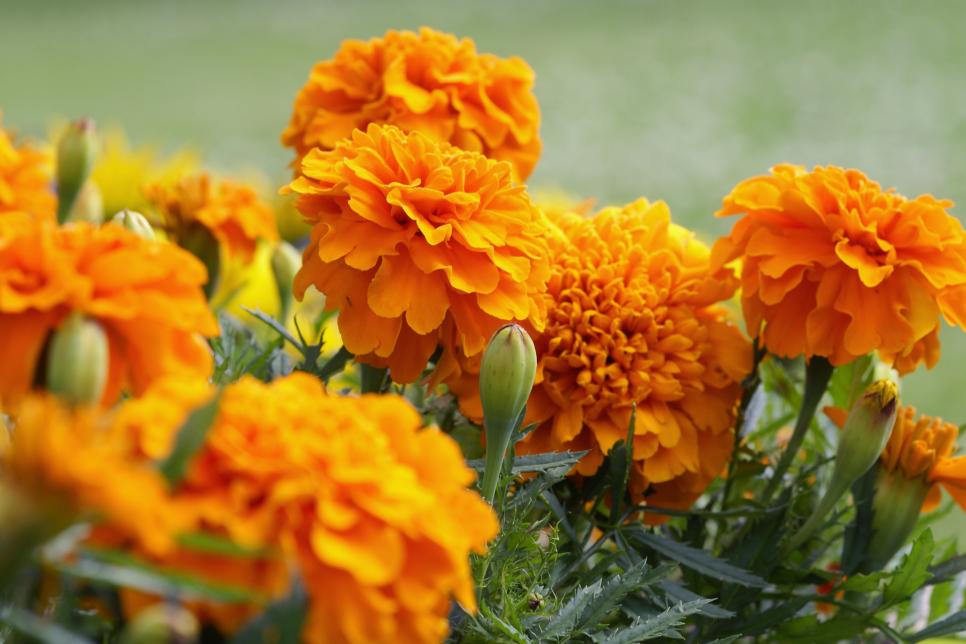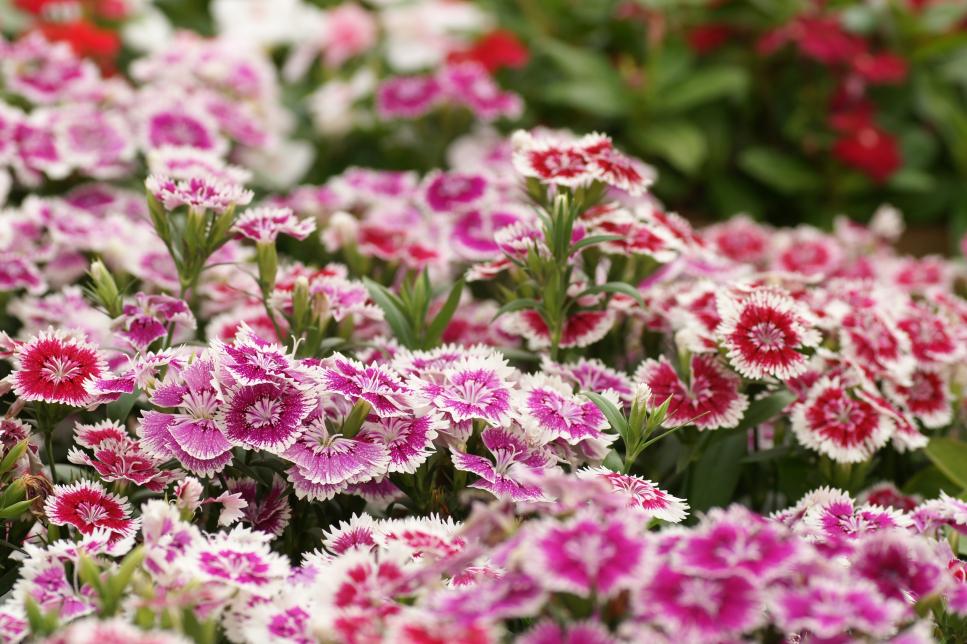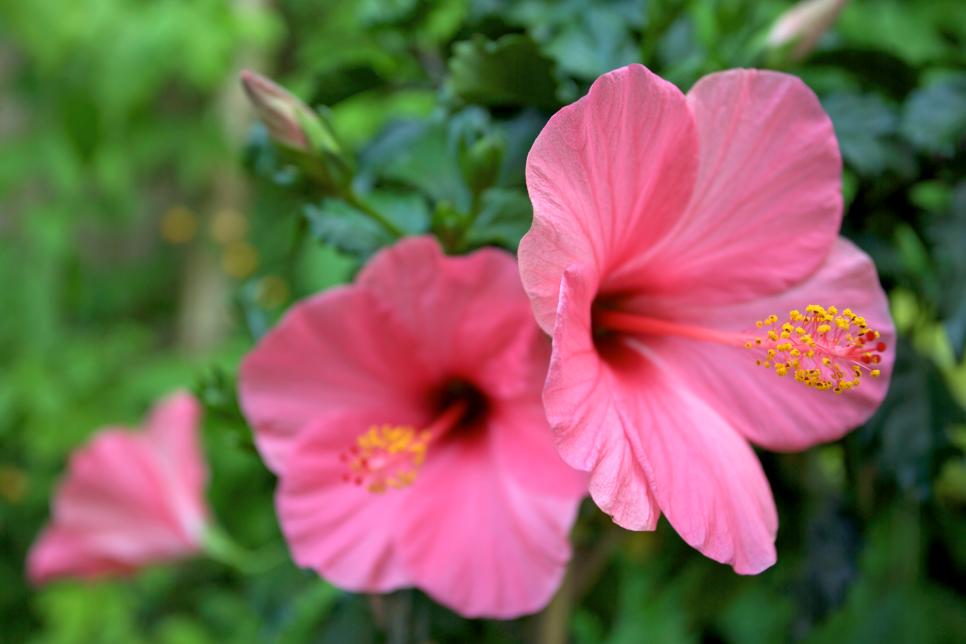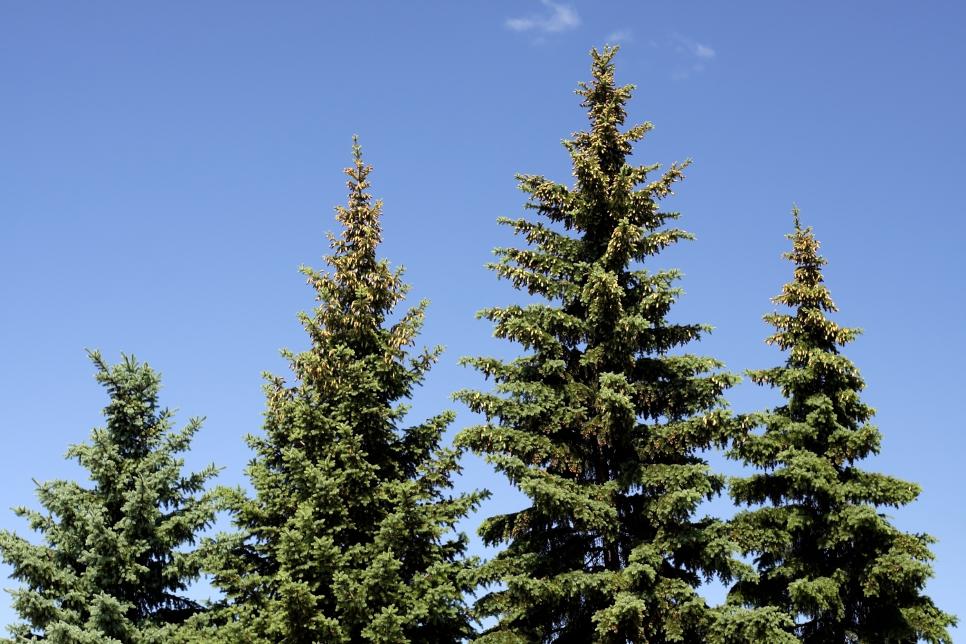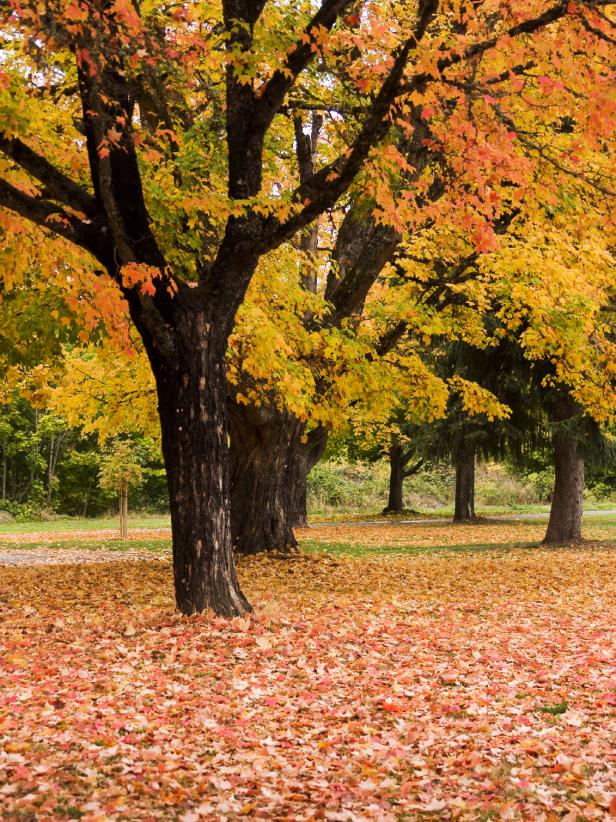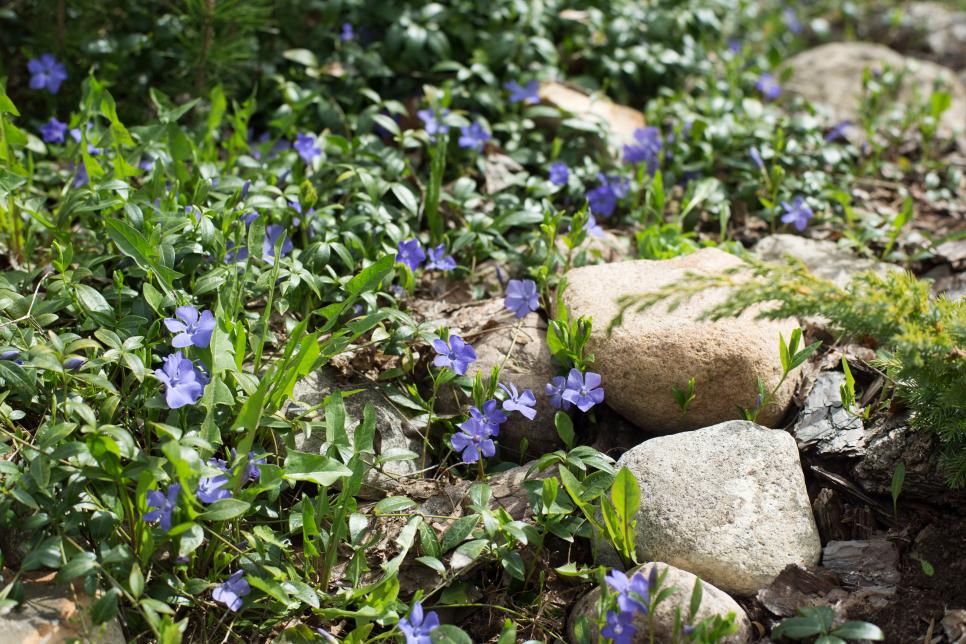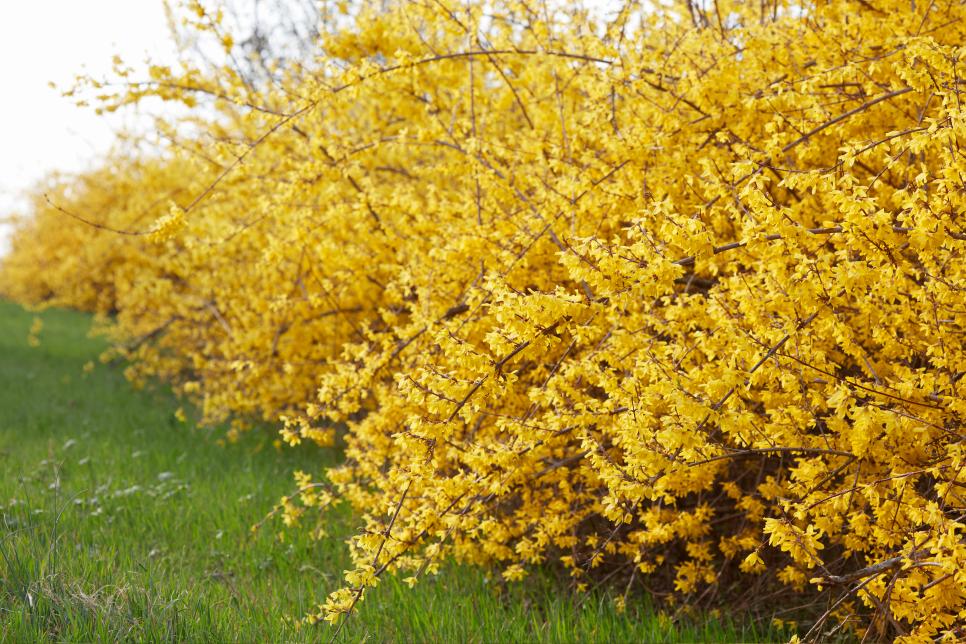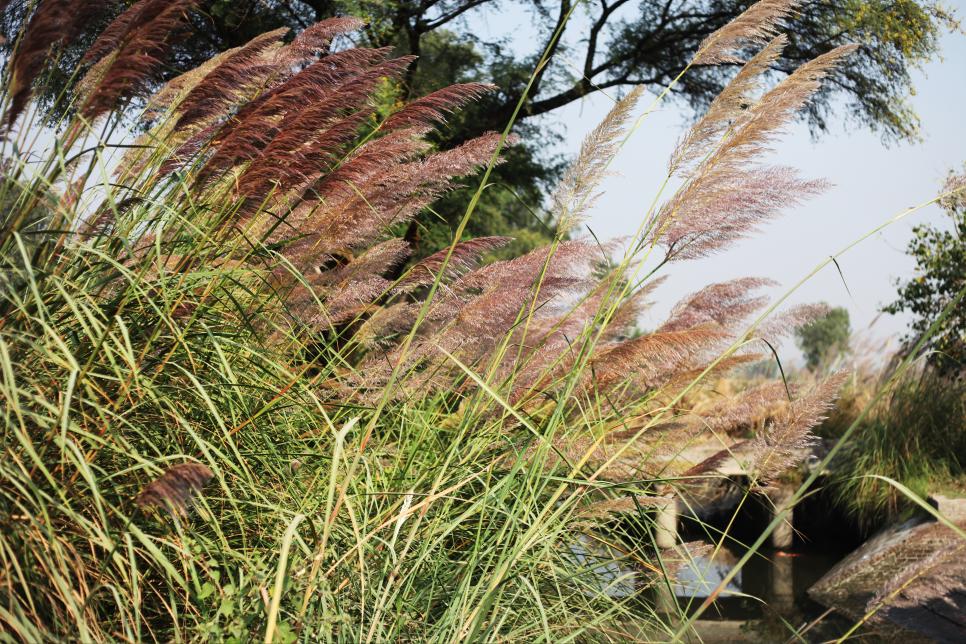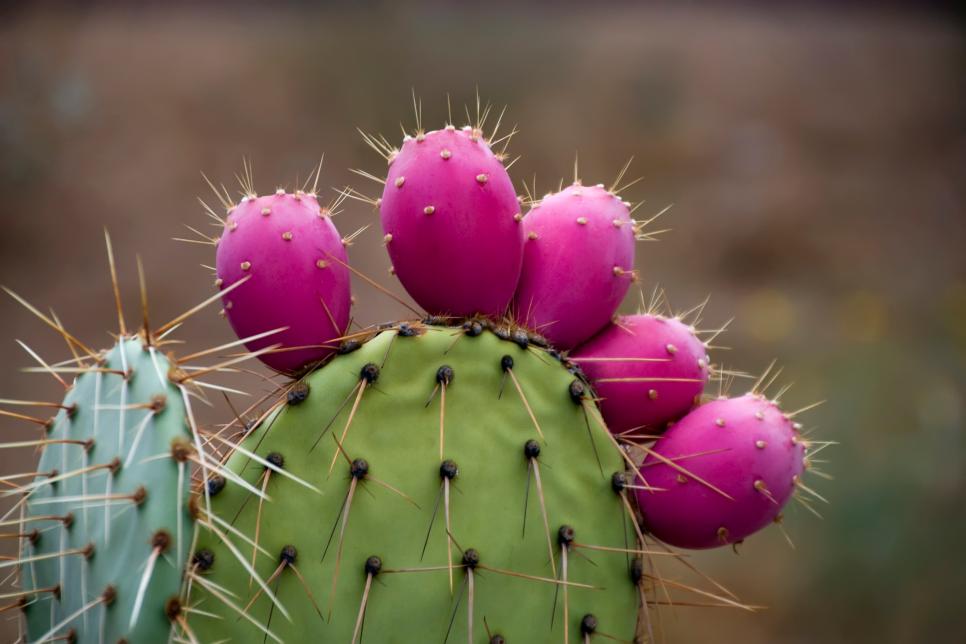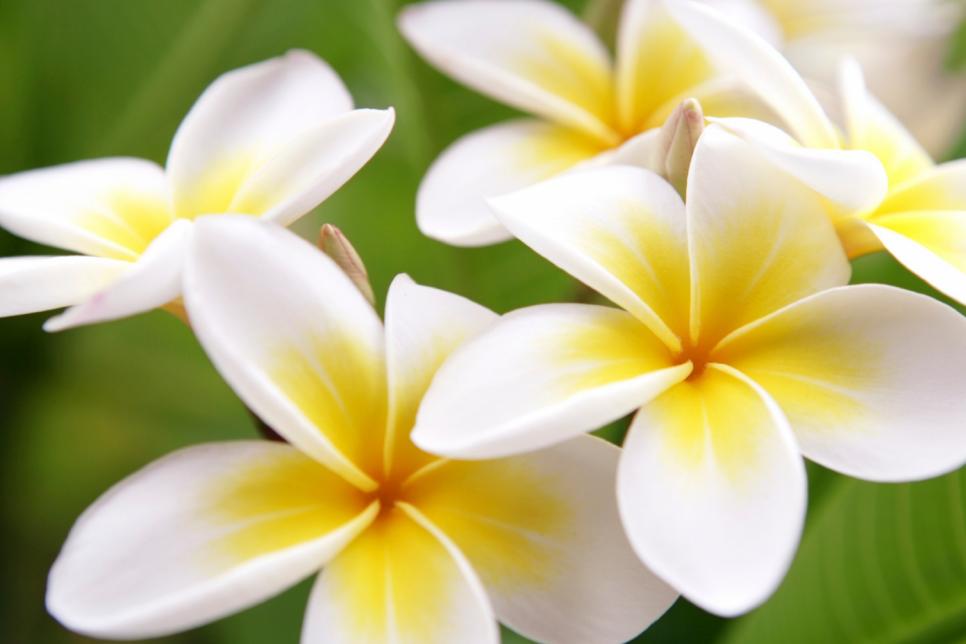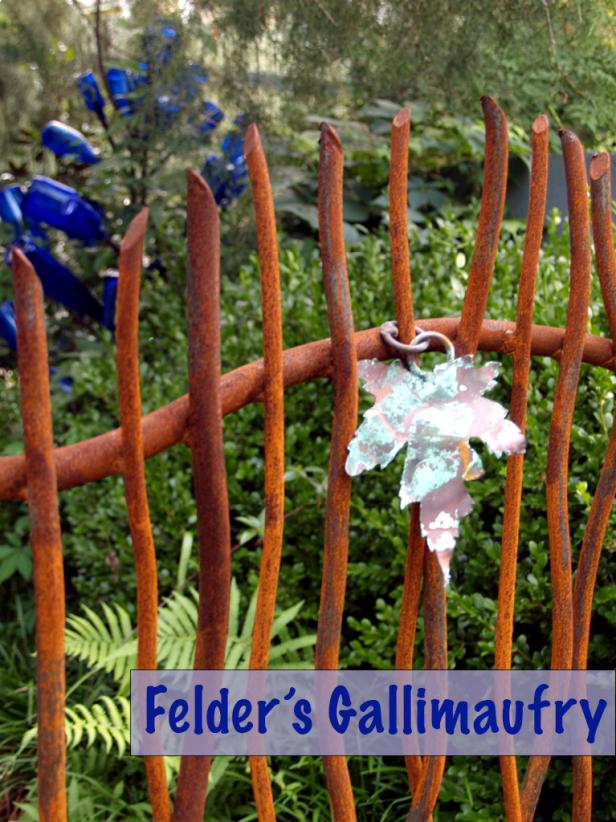
Before - high maintenance and uninviting Illustration of the "before" landscape - fairly useless and uninviting, simply grass to mow!
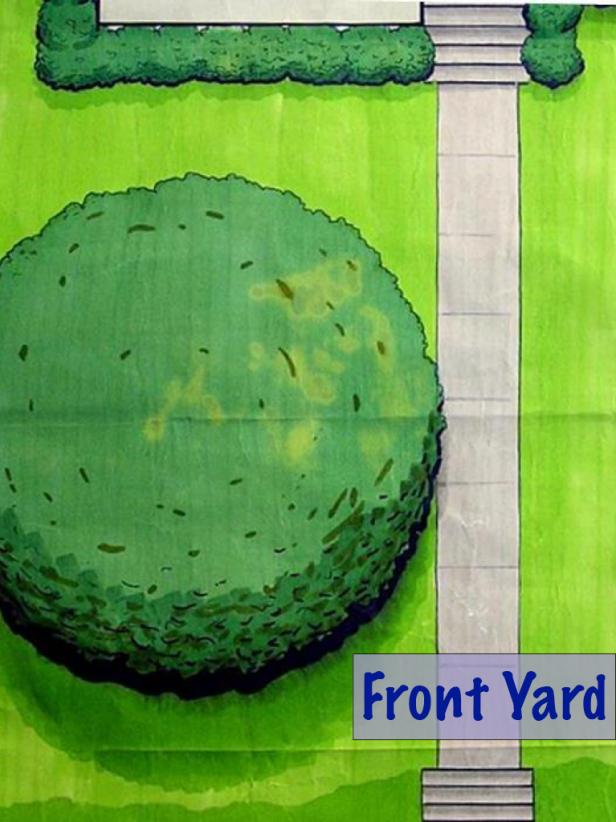
Small Enclosed Front Garden WIth the help of a landscape architect, Felder enclosed his front lawn and built a "green roof" entry arbor. The backyard was also reversed - it currently faces the home instead of the road.
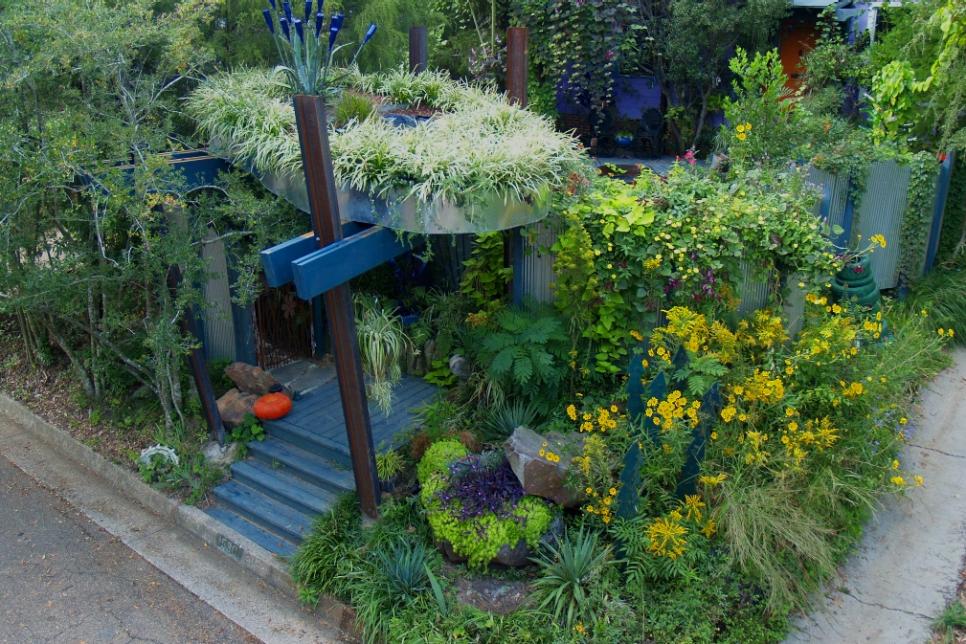
Front Garden View from the House The front lawn is seen from the home, not in the Road, and includes water, fire, round decks, and complete solitude - along with plants which provide texture and colour every week of the year
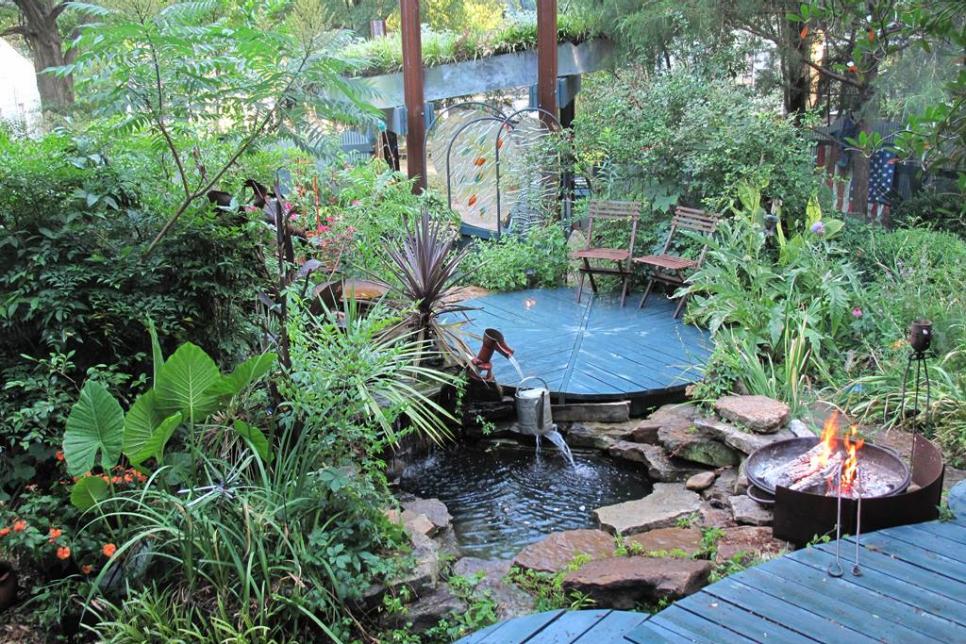
Mississippi Gardens Have Winters, Too Even in winter the backyard has texture and color - including a large iron fire pit
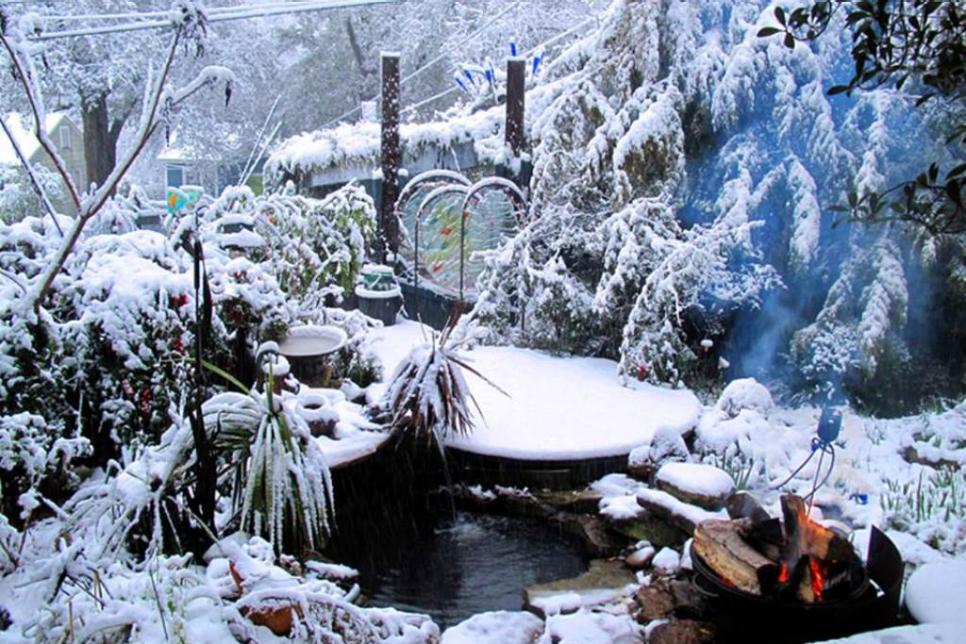
Back Yard - Where's Felder Actually Lives Because Felder travels extensively, he lifts his "front" house and lives in a small cabin in the trunk - making that his main personal garden

Back Garden Repeats Front Garden Round Theme A raised boardwalk and a flagstone walk encircle the small backyard, with the cottage on one side and a series of arbors and a fire pit surrounding a round mulch bed that is filled with antique daffodils in spring and winter.

Energy-Efficient Tiny Cabin Felder's tiny cabin is only 250-square ft, such as a tower kitchen which doubles as a solar heat collector in sunlight and also slanted porch roof that offers summertime while capturing cool summer breezes. The deck has been painted every year with all the official Pantone Color Institute colour of the entire year (in this instance 2013 Emerald Green).
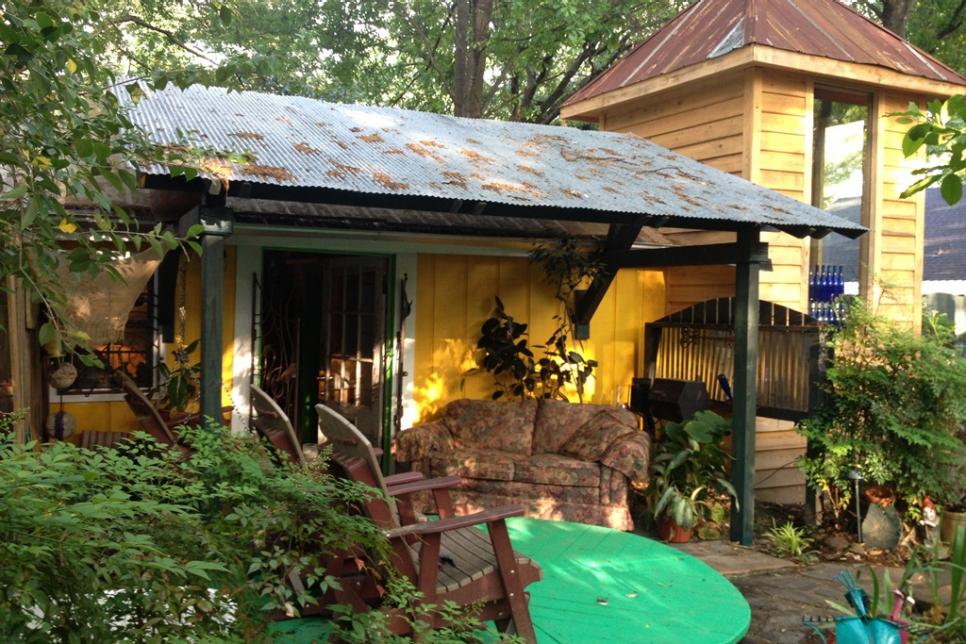
Colorful Round Deck Repeating the circular theme of Felder's front and rear gardens, such as a round daffodil mattress (dormant in this sumemr scene), this deck is painted "Radiant Orchid" which was the Pantone Color Institute's 2014 color of this year. Notice the arbors about the far side of the tiny back garden.
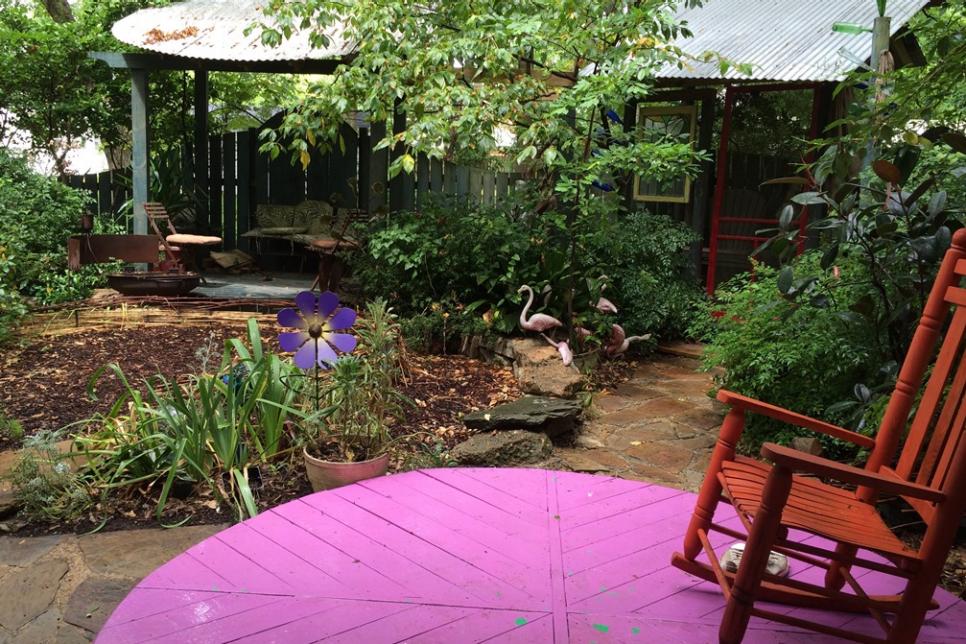
Cover Arbors for Folks Comfort Round the back garden, opposite the cottage, is a string of comfy arbors, some covered, for seats and to enjoy a roaring fire pit. Then entire back garden is surrounded with flagstone and increased walks.
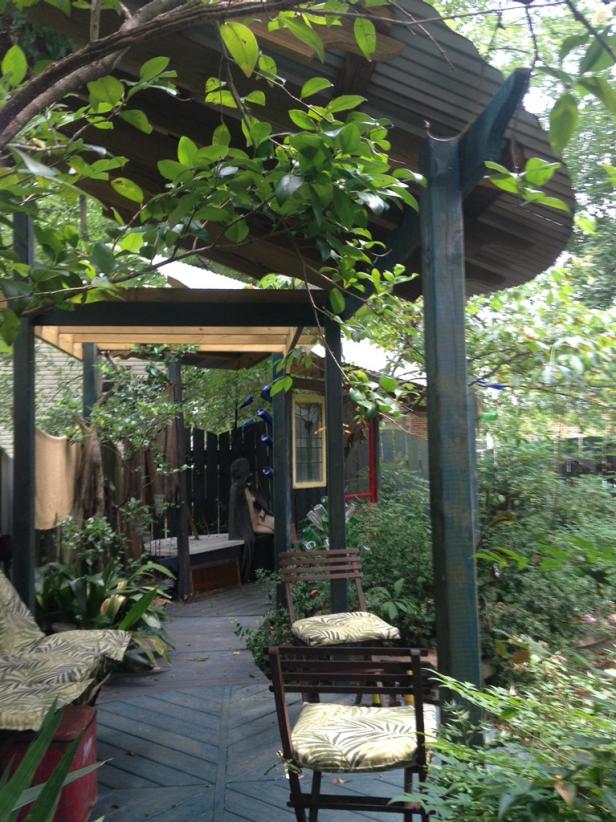
Practical Hardscaping It takes more than crops to make a garden function.
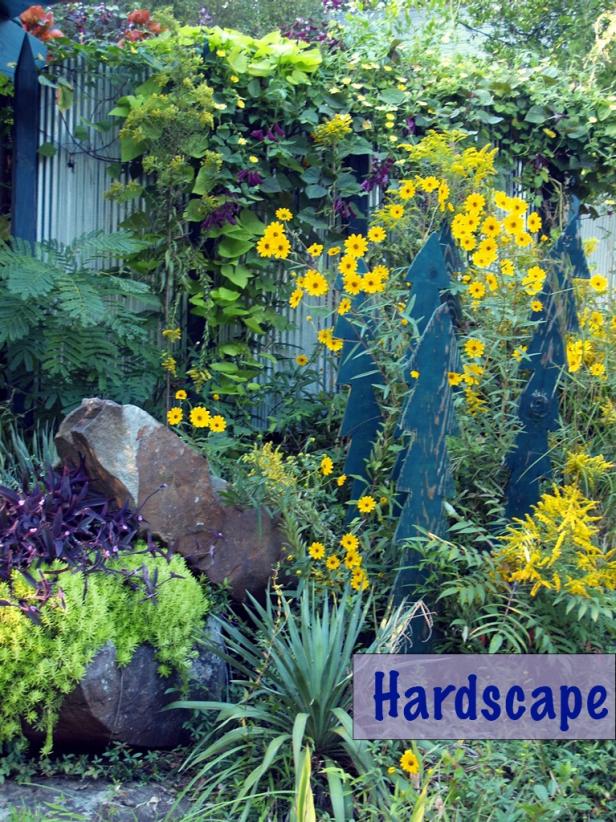
Teal Paint and Chairs Made of Bicycle Tires Color and whimsy are all hallmarks of fun gardens - and that front deck invites relaxation and laughter.
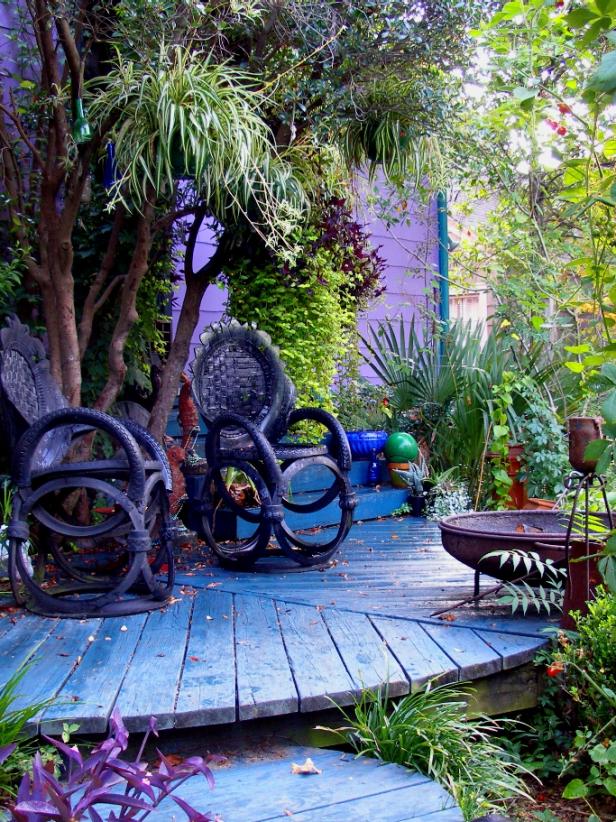
Whimsical Shape to Back Deck Who says a deck needs to be square, or even round? This is supported by extended beams attached to iron posts.
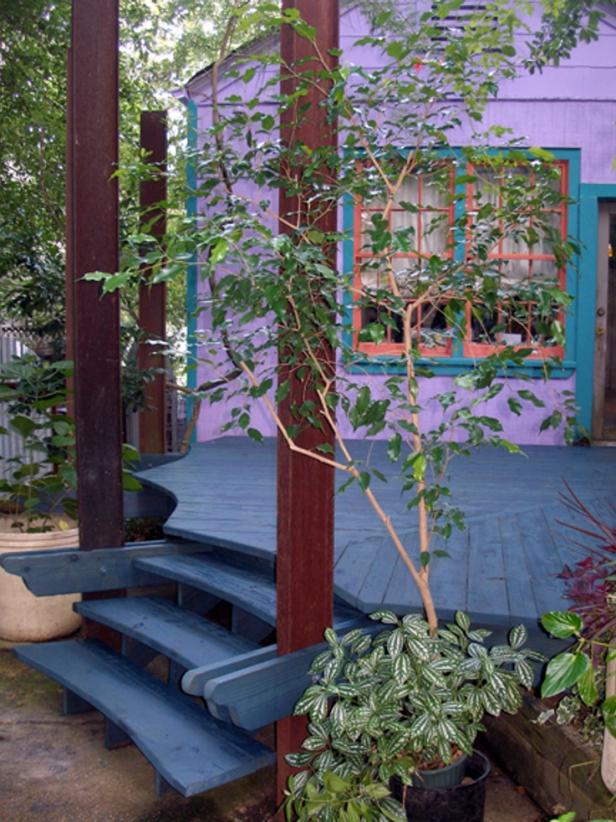
Noisy Waterfall The small but heavy water backyard has a waterfall constructed over a small cave which amplifies and "aims" the noise towards the front deck - similar to cupping your hands will help direct your voice.
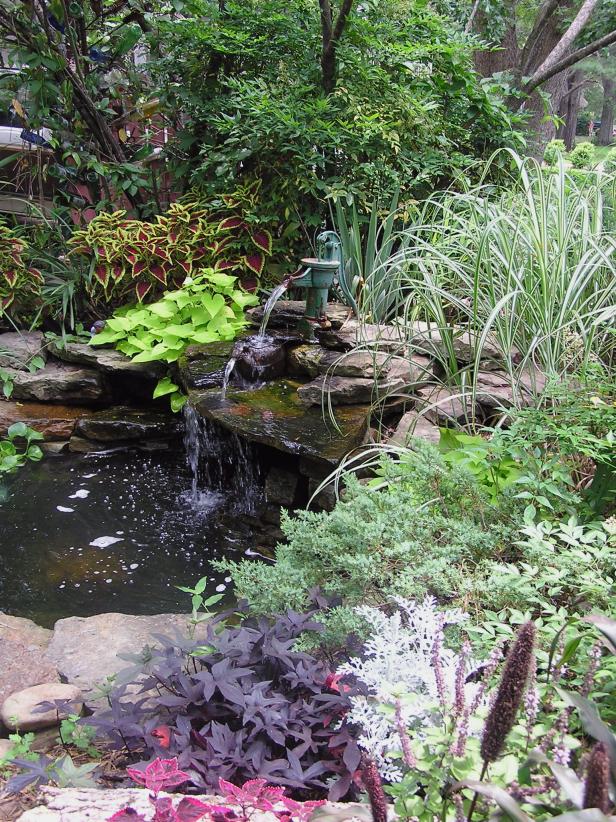
Fire Bowl Adds Special Element Nothing beats the combination of fire and water in a backyard - Felder considers we are "hard wired" for them equally.
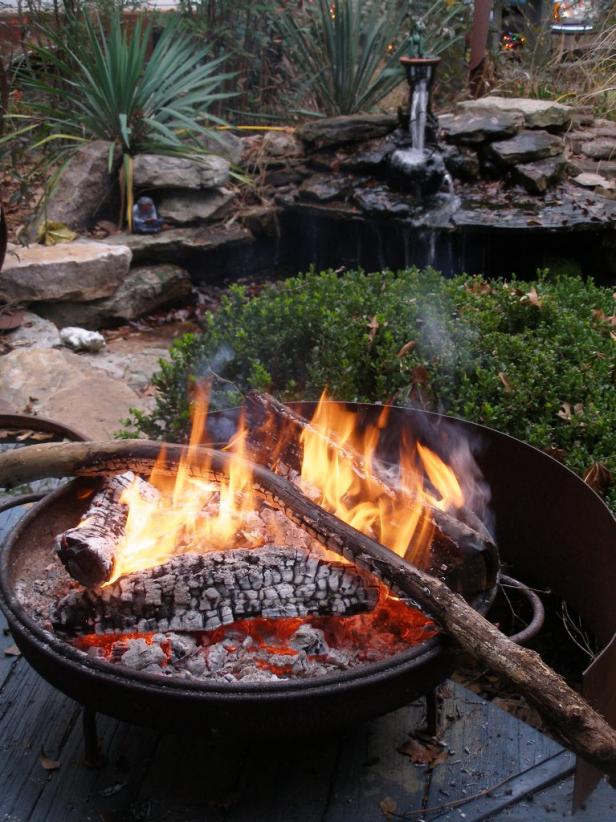
Rainwater Collection Roof and Cistern The front porch has been redesigned to collect and funnel rainwater running off the house's metal roof, and can fully fill a 300-gallon cistern from only 1 inch of rainfall.
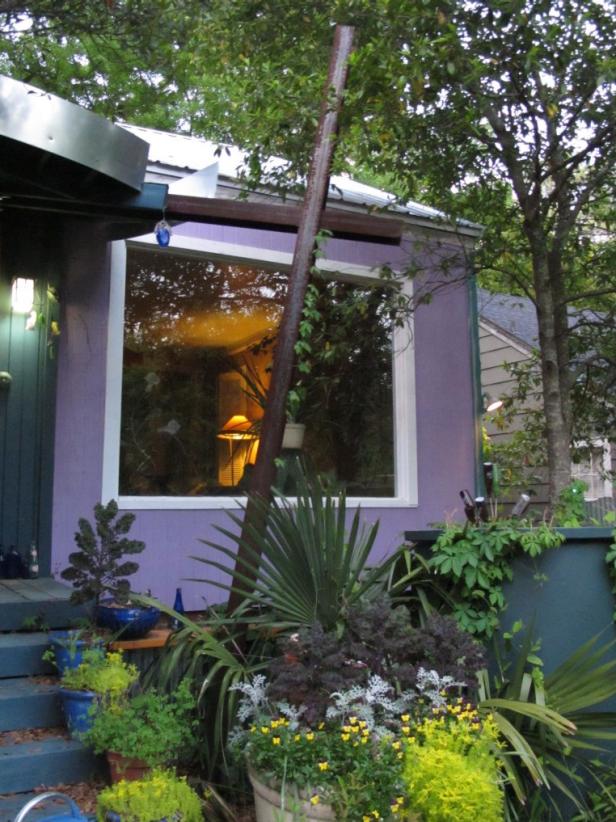
Green Roof Entry Arbor This "green roof" arbor is encouraged by 14-foot iron I-beams and implanted with Liriope, Artemisia 'Powis Castle', 'Blackie' ornamental sweet potato, and cascading rosemary.
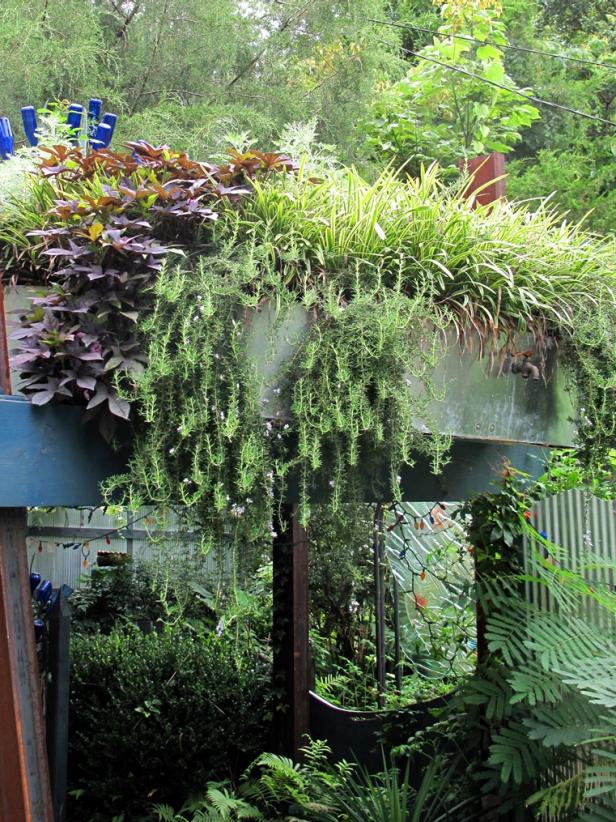
Contemporary Upgrade A new arched bridge connects the center deck, along with the first waterfall garden was filled in to get a calmer appearance and less upkeep.
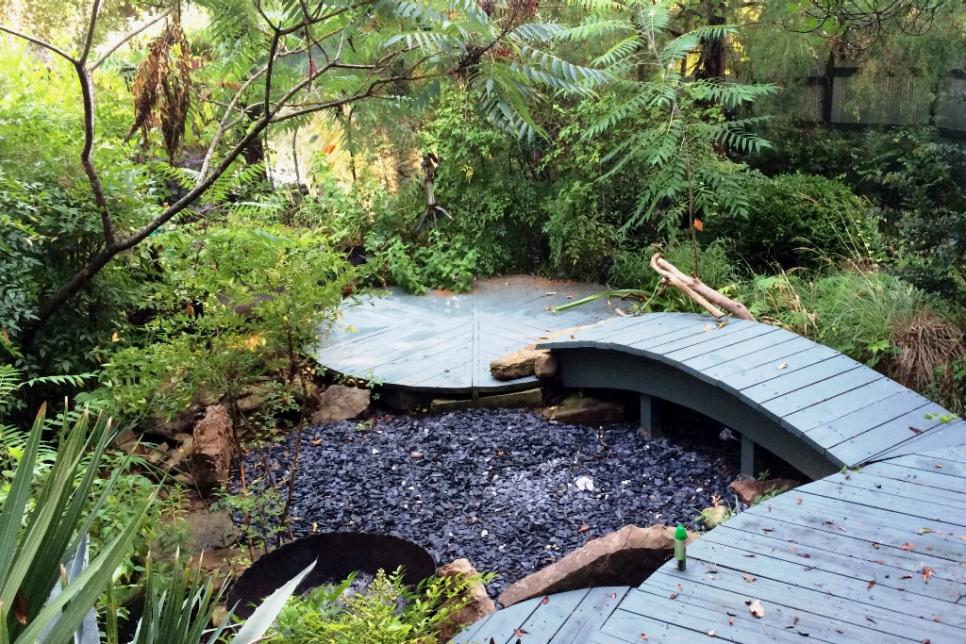
Plants from A to Z in a small garden Felder develops a wide assortment of shrubs, flowers, vegetables, fruits, and tropical potted plants.

Heirloom Pepper 'Birds Eye' (Chile pequin) peppers are among Felder's many heirloom vegetables which are unavailable at shops.
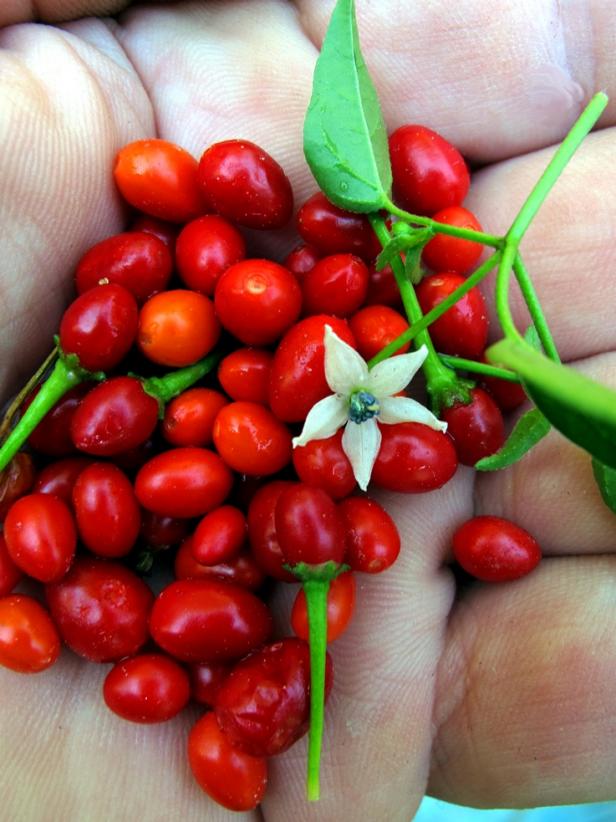
Sansevieria Collection Just a smattering of Felder's extensive group of low-maintenance Sansevierias, which endure months of neglect when he is away on extended trips abroad.
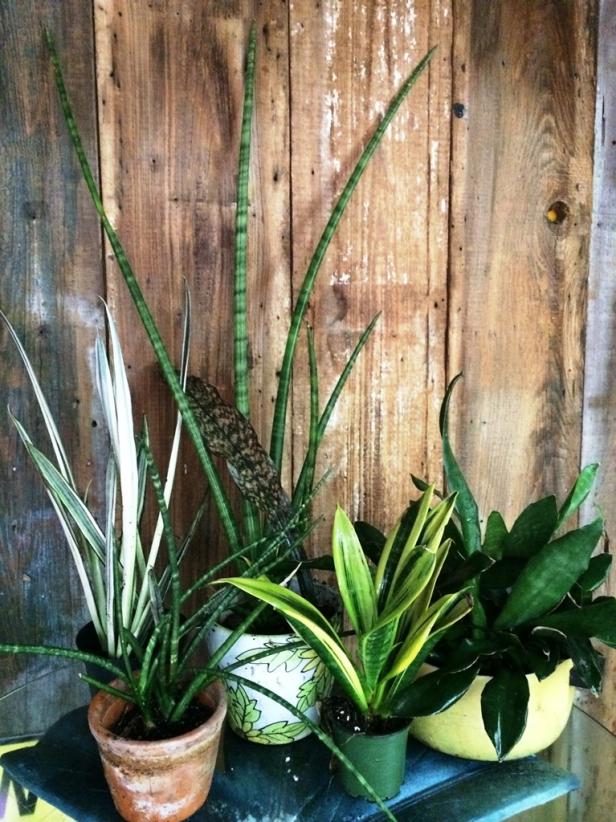
Heirloom Daffodils Many of Felder's dozens of daffodils, increased in a round back garden bed, came from his horticulturist great-grandmother's garden. Listed below are a few that were blooming one March day.
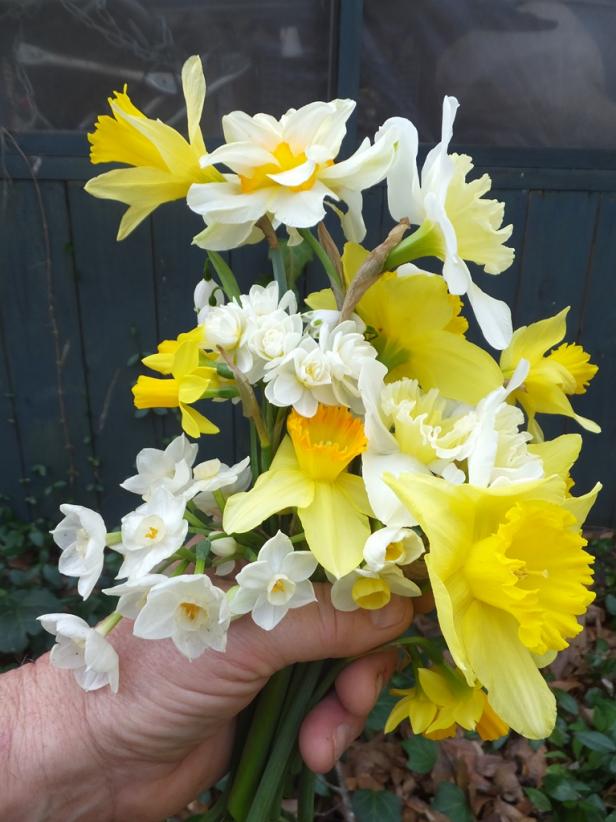
Small Flower Bed Felder plants just three small flower beds of seasonal annuals, which require very little cost and upkeep, but jointly give a big splash of color through all seasons.
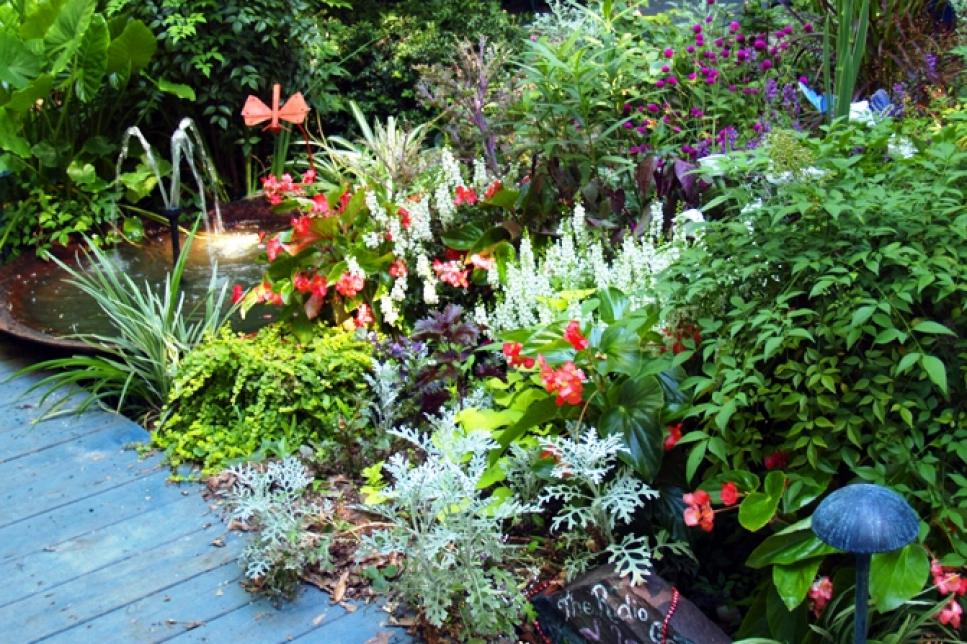
Combo Veggies in Buckets Closeup of a few of Felder's veggies and herbs, he develops in painted buckets on a sunny deck.
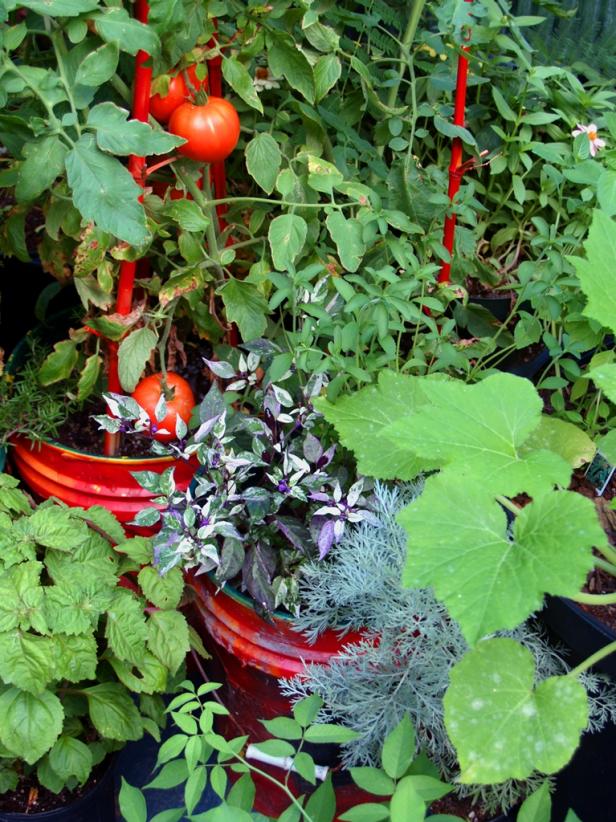
Salad Garden at a Recycled Pot An old cooking pot with drainage holes drilled in it develops a lush salad garden of leafy greens, onions, kale, parsley, and edible-flowered violas on a bright winter deck.

Hosta and Fern Collection Felder includes a tiny raised-bed collection of shade plants including hostas, ferns, hecucheras, and companion plants, plus a splashy waterfall to keep things cool and humid at the hot Mississippi summers.
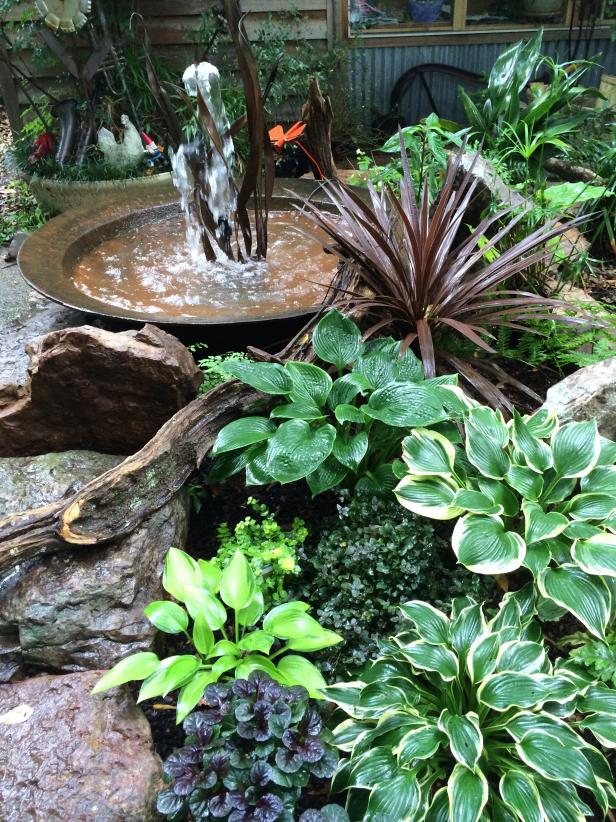
Truck Garden For several years now Felder has grown flowers, shrubs, herbs, and veggies - plus lots of "yard art" - in the back of his pickup truck, through all seasons. He compels thousands of miles a year using it living hot sunshine, winter cold. . .and hurricane-force wind!
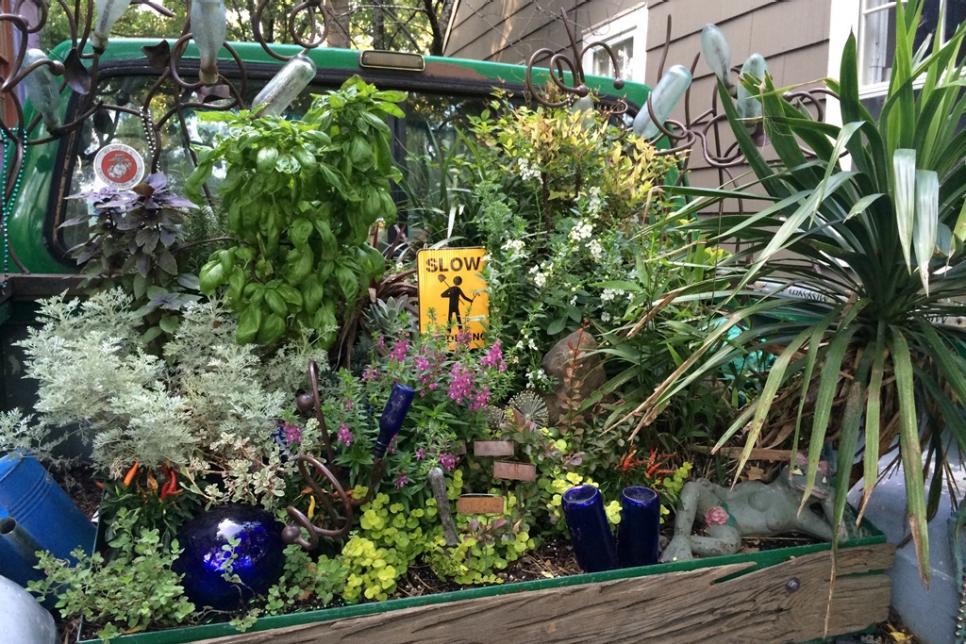
Yard Art Personalizes the Garden Nothing too whimsical for this world traveler who can use a fantastic laugh at his garden!
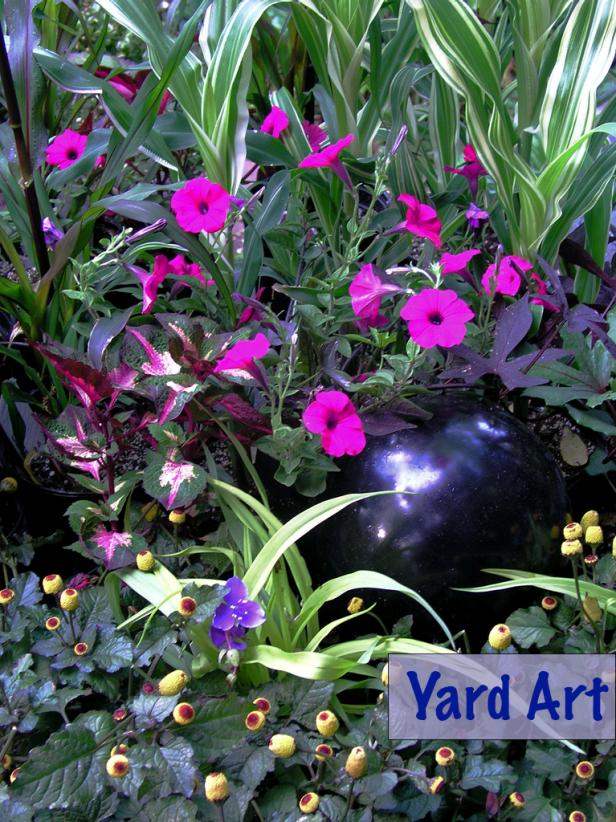
Lawn Art - St. Fiacre This statue of Fiacre, official patron saint of gardeners, adds a good touch yearlong to an ever-changing seasonal garden spot.
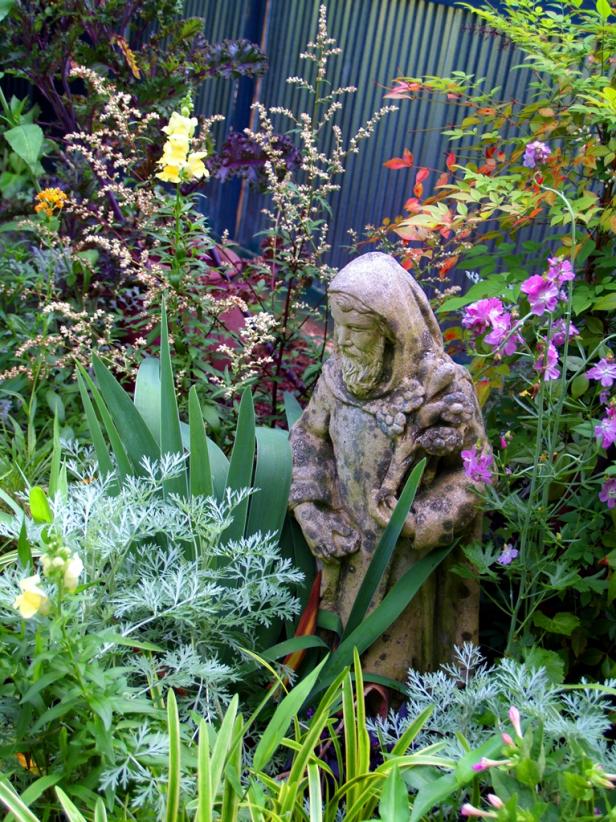
Recycled Metallic Scarecrow One of Felder's metal sculpture friends made this whimsical scarecrow - including crow - from recycled metal.

Vinyl Pink Flamingoes Felder has a set of America's most loved-to-be-hated icons, plastic pink flamingos. But there's a twist: Many of his have been personally autographed by Don Featherstone who first patented the creatures in 1957, and that famously said that "before plastic, just wealthy people could afford poor taste!"

Tire Christmas Tree It took days to assemble just the right size tires to stack and paint into a somewhat natural-shaped "rubber bush" which is festooned at Christmas with lights and ornaments such as nothing else in the neighborhood.
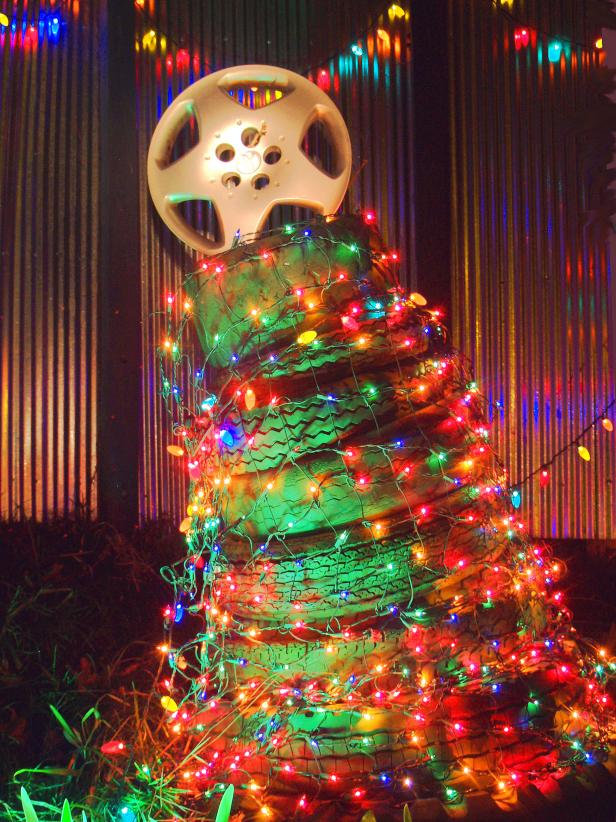
Glass Garden Art Felder also collects from nationally-known artists for interesting items in his backyard. In cases like this, he commissioned a trio of vibrant glass plates, each nearly four feet tall and hung between his front door and the street.

Cobalt Blue Glass Bottle Tree One of Felder's ten bottle trees is a custom made metal bottle tree which adds some whimsy and color to the corrugated tin fence enclosing his backyard. It's lit up at night time.
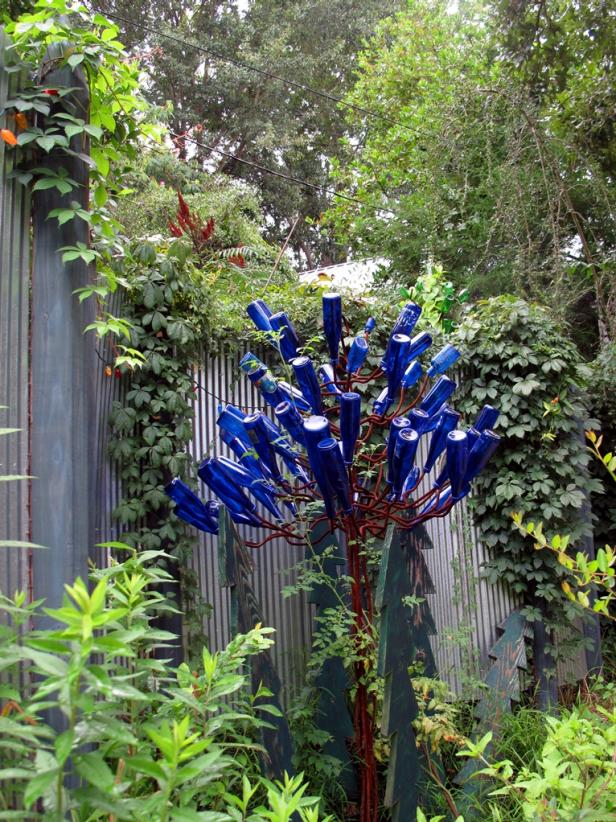
Blue Bottle Tree Felder wrote a novel about his treasured home-made yard art - whimsical wooden or metal "trees" festooned with colorful bottles, a practice which goes back thousands of years to ancient Arabian folks stories of genies in bottles.
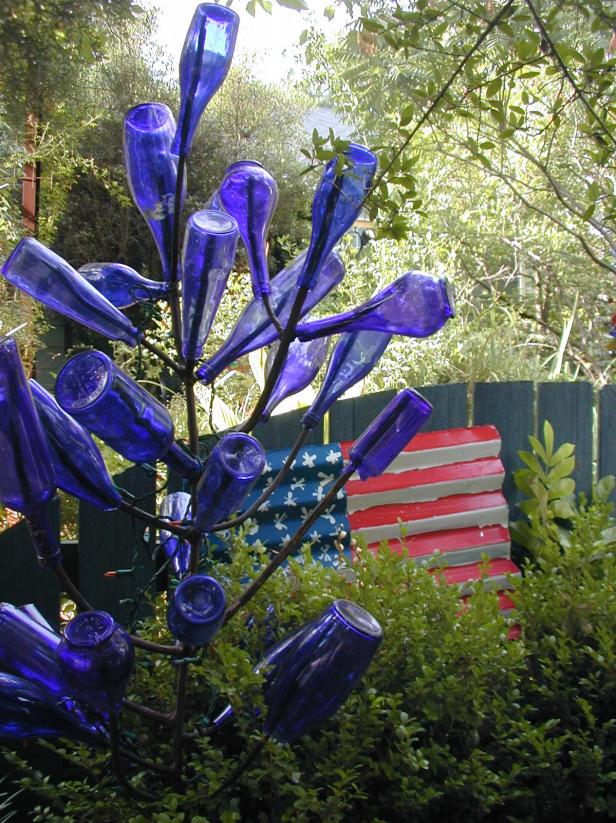
Felder and his Dog Rusty They love and amuse each other. 'Nuff said.

